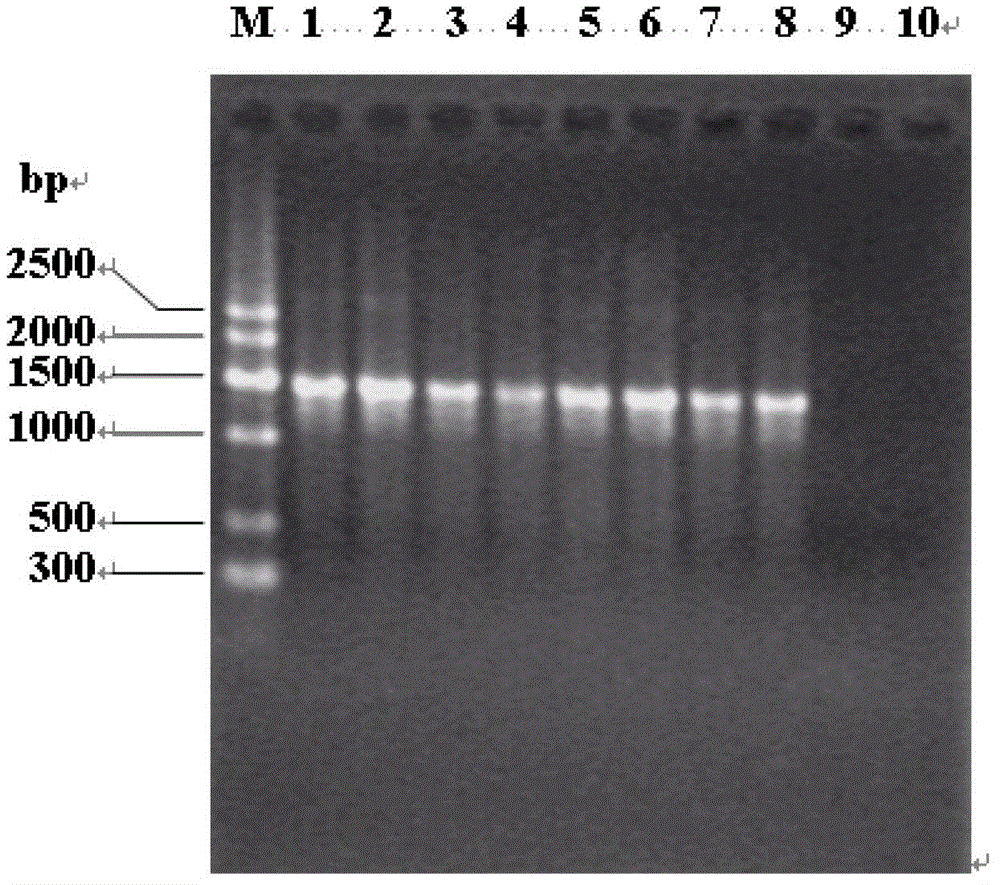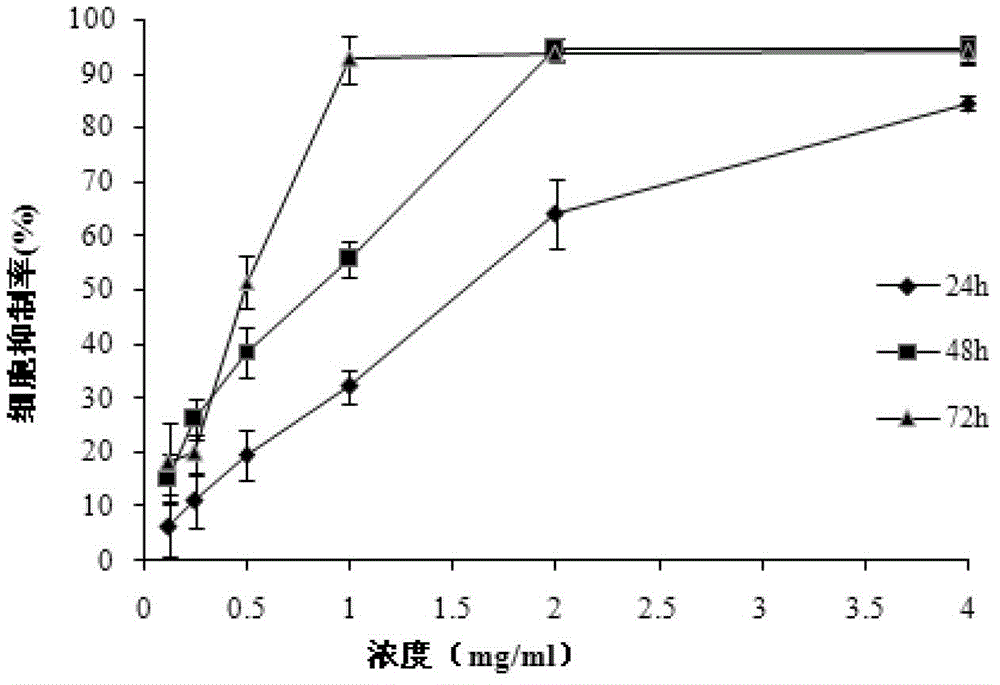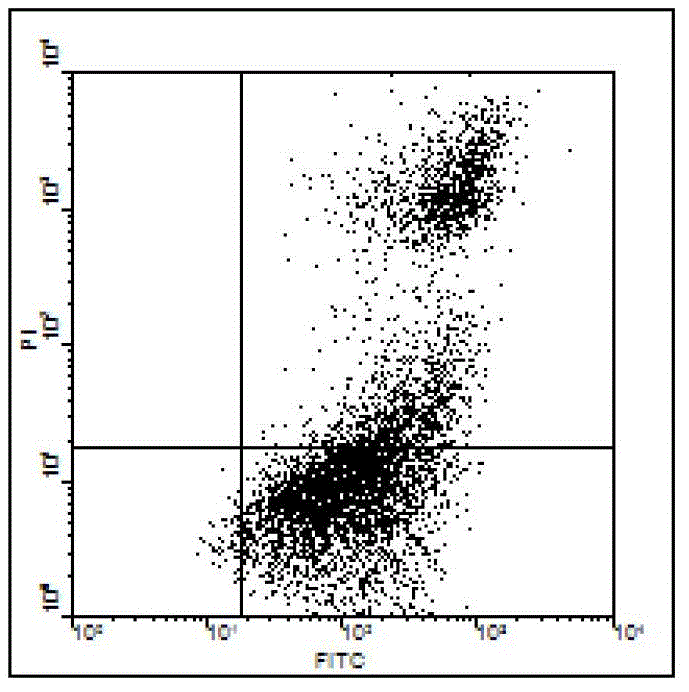Lactic acid bacterium used for fermenting cereal and applications thereof
A technology of lactic acid bacteria and Lactobacillus plantarum, applied in the direction of fermentation, microbial-based methods, bacteria, etc., can solve the problems that the efficacy needs to be further improved, and achieve the effect of low production cost and convenient quality control
- Summary
- Abstract
- Description
- Claims
- Application Information
AI Technical Summary
Problems solved by technology
Method used
Image
Examples
Embodiment 1
[0051] Weigh 20.0g of crushed fresh wheat germ powder into a 500mL conical flask, add 100ml of distilled water to it, then add 0.4g of Lactobacillus plantarum Dy-1, and mix well; seal the conical flask with gauze , placed in a constant temperature incubator and fermented at 30°C for 24h, centrifuged at 12000rpm / min for 20min to collect the supernatant and freeze-dry to obtain fermented wheat germ extract (LFWGE)
[0052] Weigh 0.5g of LFWGE and dissolve it in 50ml of deionized water, pass through a 0.22um filter membrane, and filter the filtrate according to 0.125mg / mL, 0.25mg / mL, 0.5mg / mL, 1.0mg / mL, 2.0mg / ml, 4.0 mg / ml were added to HT-29 colon cancer cells, and the cells were cultured for 24h, 48h, and 72h, and the inhibition rate of LFWGE on colon cancer HT-29 cells was determined by MTT method ( figure 2 ). The results showed that the concentration of the extract was positively correlated with the inhibition rate of tumor cell proliferation, and the maximum inhibition ra...
Embodiment 2
[0055] The above-prepared LFWGE was dissolved in physiological saline to prepare aqueous solutions with a concentration of 0.2 g / ml and 0.1 g / ml, and treated through a sterile membrane for use. Human HT-29 colon cancer cells were inoculated subcutaneously into the abdomen of 4-6 week-old BALB / c nude mice, and 2 days later, 2 g / kg / d, 1 g / kg / d, 2 g / kg / d+5-FU (25 mg / kg / d, i.p, 7 days) dose of LFWGE was administered to tumor-bearing nude mice for 30 consecutive days. ) compared with the 5-FU group, and the antitumor effect of LFWGE was determined by measuring the change of tumor volume and the final tumor inhibition rate ( Figure 5 ,6). The results showed that the tumor inhibition rates of 2g / kg / d, 1g / kg / d, 2g / kg / d+5-FU LFWGE dose groups reached 49.37%, 40.7%, 47.8%, respectively.
Embodiment 3
[0057] Weigh 20.0g of barley flour crushed through a 60-mesh sieve into a 500mL conical flask, add 1:6 water to it and mix evenly, first use 0.015% β-glucanase to hydrolyze at 40°C for 30min, then use 4 % Lactobacillus plantarum (Lactobacillus plantarum Dy-1) was fermented at 30°C for 48h. After the fermentation was completed, the FBE was centrifuged at room temperature at 6000rpm / min for 20min, and the supernatant was collected and freeze-dried for 24h to obtain the fermented Barley Extract (FBE).
[0058] Weigh 0.5g of FBE and dissolve it in 50ml of deionized water, pass through a 0.22um filter membrane, and filter the filtrate according to 0.125mg / mL, 0.25mg / mL, 0.5mg / mL, 1.0mg / mL, 2.0mg / ml, 4.0 mg / ml were added to HT-29 tumor cells, and the cells were cultured for 24h, 48h, and 72h, and the inhibitory rate of FBE to colon cancer HT-29 cells was determined by MTT method. The results showed that the concentration of the extract was positively correlated with the inhibition ...
PUM
| Property | Measurement | Unit |
|---|---|---|
| control rate | aaaaa | aaaaa |
Abstract
Description
Claims
Application Information
 Login to View More
Login to View More - R&D
- Intellectual Property
- Life Sciences
- Materials
- Tech Scout
- Unparalleled Data Quality
- Higher Quality Content
- 60% Fewer Hallucinations
Browse by: Latest US Patents, China's latest patents, Technical Efficacy Thesaurus, Application Domain, Technology Topic, Popular Technical Reports.
© 2025 PatSnap. All rights reserved.Legal|Privacy policy|Modern Slavery Act Transparency Statement|Sitemap|About US| Contact US: help@patsnap.com



